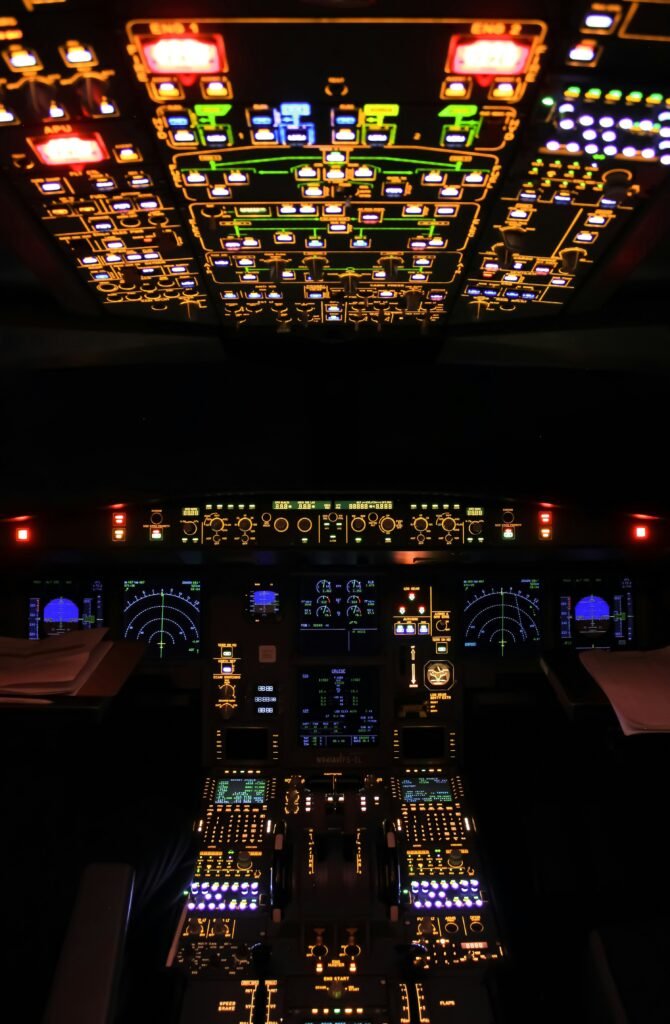✈️ The Essential B787 Descent Guide: Pro Tips for a Flawless Arrival
The descent phase might seem like the home stretch—but on the Boeing 787, it’s a critical window where precision, timing, and awareness matter most. Whether you’re managing energy for a Continuous Descent Operation (CDO), executing a step-down arrival into complex airspace, or dealing with a high-altitude emergency, this part of the flight demands focus and finesse.
In this guide, we’ll cover key descent techniques, system behaviors, memory items for emergencies like rapid depressurization, and common traps to avoid. You’ll also find practical Q&A, video resources, and real-world planning tips—so you’re ready for anything from TOD to touchdown.
Because every smooth landing starts with a smart descent. 🛬💼

🔹 1. Initiating Descent
- Engage DES NOW or press the ALT selector after dialing in lower MCP altitude.
- If within ~50 nm of TOD and VNAV active, descent begins automatically at ECON speed.
- Beyond 50 nm, descent begins at ECON CRZ speed using off‑idle thrust.
- Always set IAS ECON or DES speed in FMC before mode transitions to avoid abrupt speed changes.
- Be aware: the Mach-to‑IAS transition at FL310 (310 KT) can delay descent in case of cross-check airway constraints.
🔹 2. VNAV ALT Mode & Conflicts
- If MCP altitude conflicts with VNAV path, VNAV ALT will engage (level off) until you update constraints or mode.
- Use DES DIR to delete waypoint altitude constraints between current altitude and MCP target.
🔹 3. Continuous Descent Operation (CDO)
- Fuel-efficient tactic: plan a constant-angle ~3° descent (≈ 318 ft/NM), idle power, no speed brake, from cruise altitude to final approach.
- Typical planning rules:
- 10,000 ft @ 250 KT ≈ 30 nm out
- 6,000 ft @ 210 KT ≈ 20 DME
- 5,000 ft minimum clean config below 700 ft/min ROD
- Flaps 5 at ~8 nm, gear down before 1,500 ft AAL.
🔹 4. Emergency / Rapid Depressurization
- Watch for CABIN ALT pops above 10,000 ft on EICAS.
- Don oxygen masks, switch comms, press ALT HOLD, start descent ASAP.
- Use EMER DESCENT memory items:
- Select HDG rotate ±45°, engage speed brake, set transponder 7700, landing lights on, thrust idle, seat belt signs on.
- Once below 10,000 ft cabin altitude: masks off, reset oxygen to NORMAL, brief cabin, start diversion planning.
Refer to the Driftdown tips here.
🔹 5. Common Errors to Avoid
- Retracting speed brake too early (e.g. >2,000 ft before level-off) may overspeed VMO/MMO.
- Attempting non-essential tasks (checklist reading, cabin calls) before stabilizing descent.
- Forgetting to set seat belt signs, landing lights, transponder code, and oxygen switch settings.
🔹 6. Weight Effects on Descent
- Heavier weight → momentum → shallower descent gradient → earlier TOD.
- Heavier aircraft maintain higher IAS relative to lighter ones, so the heavier you are, the earlier you must start descent to meet intercept constraints.
💬 Q&A for Descent Phase
Q1: When should I use DES NOW versus ALT selector?
A: DES NOW auto‑initiates a standard descent (~1,250 ft/min) if near TOD; ALT selector prompts descent only after releasing waypoint constraints—choose based on flight position and workload.
Q2: How does VNAV ALT behavior affect my descent schedule?
A: VNAV ALT maintains level flight when MCP altitude conflicts with FMC-managed path. To resolve: change MCP altitude, push ALT selector, or switch to V/S or FPA mode.
Q3: What’s the benefit of a Continuous Descent Operation (CDO)?
A: CDO minimizes thrust changes and uses idle descent—fuel efficient, quieter (noise benefit), and reduces workload.
Q4: What immediate actions take priority during cabin depressurization?
A: Oxygen masks on, ALT HOLD, communication established, MAYDAY call, HDG turn, thrust idle, speed brake out, transponder 7700, cabin briefing—before non-essential tasks.
Q5: How do you prevent overspeed when accelerating through descent?
A: Retract speed brake only after leveling off. Use FMS speeds and avoid premature drag changes above 2,000 ft before target altitude.
▶️ Video Walkthrough
Tutorial B787 MSFS2020: DESCENT PLANNING (real‑procedure guide)
Also check out this full tutorial: “Beginner Tutorial: Descent to Landing with a Real 787 Pilot!”